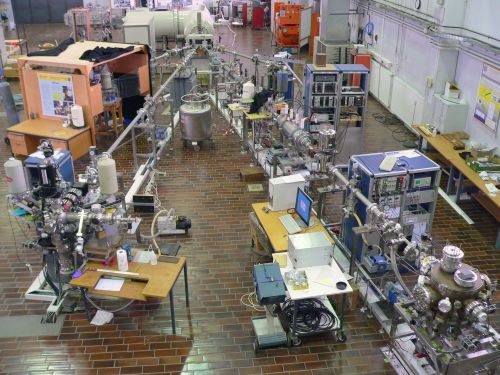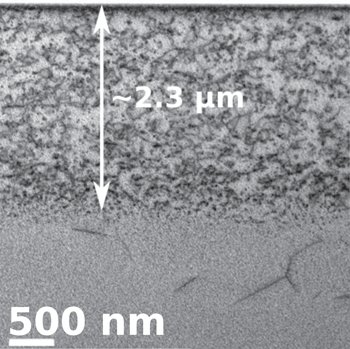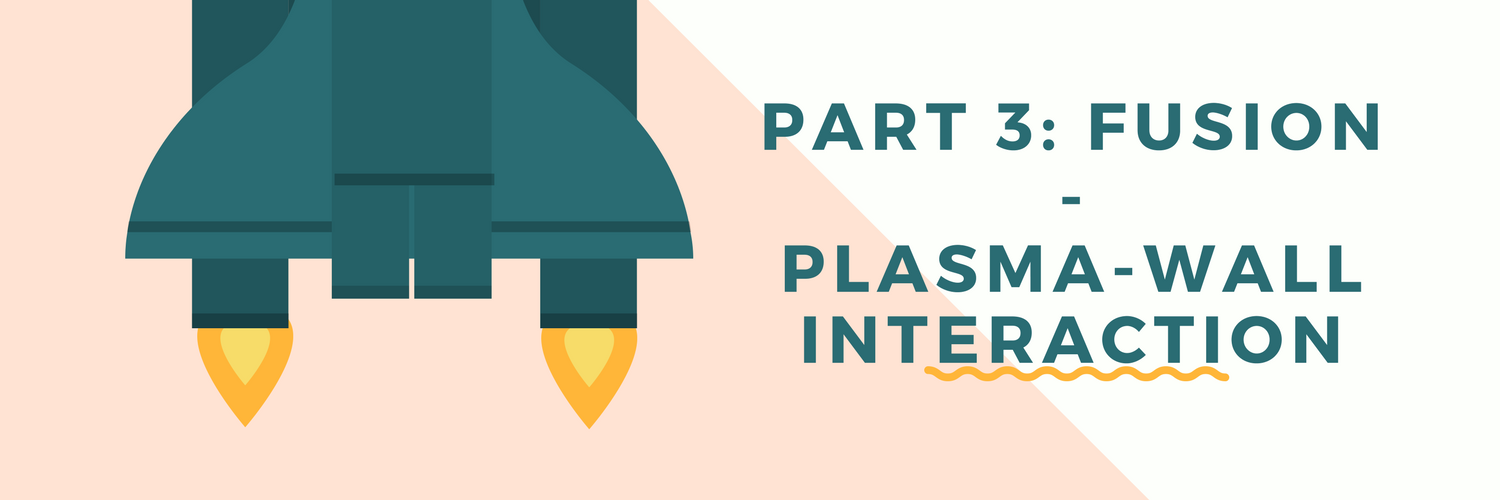Science Series about Fusion: Part 3 - Plasma-Wall Interaction
It is finally this time of the week again when I get the time to write another post in my Science series on fusion power. I am sure you are all very excited. Before I start I really want to say thank you for all of you who are upvoting my content. I get so excited I cant wait to write another post about it and that is what the whole point of my steemit blog is, at least to me. To get you excited and to get me excited.
For those of you who have not read parts 1 and 2 I suggest you read up on them before reading this one. It is definitly not mandatory if you want to understand this one but both of those posts really put things into perspective if you ask me. You can access them here:
Science Series about Fusion: Part 1- Introduction to Fusion
Science Series about Fusion: Part 2- Hardships and Achievements
Lets get started!
So as I have stated in part 2 of this series, the real issue that stands between us and having fusion as an energy source is the interaction that plasma has when it gets into contact with the wall of our vessel. Of course as I have described this can be largery negated by using very strong magnetic fields, but it can never be completely nullified. It is therefore very important to understand this interaction for the materials that we will be using as our wall material. Naturally I will be focusing my attention here on tungsten as the prime candidate for future tokamaks.

A scheme representing the interaction of varius particles from the plasma and the tungsten wall material.
Lets break the interaction up depending on what is the particle that is hitting the surface.
Hydrogen Isotopes
All hydrogen isotopes behave very similarly when they met the welcoming site of the tungsten wall so lets just, for simplicities sake, pretend we have only deuterium particles. Because the wall temperature is about 1000 K, we have ions and atoms. Also some molecules of deuterium leave the surface, because deuterium can leave the surface only as a molecule, which we call recycling. Interesting stuff! We have this whole zoo of particles and of course we must differentiate between them.
The molecules have very low energy so they usually get stuck near the wall after they leave the surface. They dissociate into deuterium atoms with energies lower than 1 eV. Such atoms with low energies get stuck right on the surface in a deep energy state called chemisorption. They essentially form chemical bonds with the tungsten on the surface. Such captured deuterium can be thermally excited to leave the surface and go into the wall comprised of tungsten.
So now we have covered our molecules and atoms, and what remains is ions. They are the simplest to study. They hit the surface and usually they knock some tungsten out of the material into the plasma, which we call erosion, while they become implanted in the material. After they are captured they can not be differentiated apart from atoms as they behave completely the same.
Sometimes the particles also bounce of the surface which we call reflection!
After any of these particles goes into the material it diffuses in the crystal mesh and from time to time it gets stuck in various defects. I will talk about them in the neutron section!
The material that was ejected by erosion usually finds itself back at the wall. In times of old tokamaks, which used carbon walls, some deuterium can be chemically captured by such eroded material so when it goes back to the wall it is captured in blobs. We call this codeposition!
Neutrons
The neutrons as neutral particles can not be stopped by the magnetic field. Therefore the flux of neutrons on the surface is pretty high. The neutrons mainly present two problems. The first one is the transmutation of tungsten into other elements that can be radioactive. This induces additional radioactivity in the wall in conjunction with the radioactivity of tritium. Fortunatelly research predicts that the decay of neutron induced radioactivity of tungsten will not be very severe and will have a time decay of about a day.
The more severe problem will be the mechanical damage the impacts of neutrons and tungsten atoms of the crystal structure of wall induce. Already some natural so-called defects occur in tungsten. As you can imagine the crystal is not perfect so some atoms are missing from their correct placement in the crystal. The neutrons however produce about 1000 times more defects than compared to naturally occuring ones.
These defects are a problem because the holes where the tungsten atoms were kicked out present very strong traps for hydrogen isotopes. They essentially get stuck there and cant get out!
So lets move on to my field of study which is the retention of deuterium in tungsten and how different parameters affect this. We use deuterium as a proxy for tritium because deuterium is much more easy to handle and produces essentially the same behaviour.
As I have said the main problem of retention will be the defects that occur when the material is bombarded by neutrons from the plasma. Such processes are very very hard to study because no stable and reliable sources of sufficiently energetic neutrons exist so we could damage the material with them.
So we cheat! We produce tungsten ions which we accelerate with an accelerator to energies of 14.6 MeV.

The accelerator we use at the Jozef Stefan Institute where I work to conduct our research!
This has served as a good proxy for neutron damage so the results from such experiments are widely accepted as valid for our use. This so-called self-damaging also has another benefit. By shooting tungsten into tungsten we dont leave a mess of impurities that would make our results unexplainable. You must know that material science is a very broad and fairly badly understood topic so anything can skew our results beyond comprehension. We really must study only one thing at a time.

A self-damaged sample of tungsten. We see that the defects that are created are pretty even up to about 2.3 microns and then they disappear.
Numerous studies have been conducted on such materials and all have shown one thing. Deuterium gets stuck in these defects. And until you heat up the material to about a 1000 K the deuterium is not going anywhere. Normally if we wouldnt have the deuterium in the tungsten the defects would sooner or later dissapear because the tungsten atoms woulc find their hole in the crystal and fill it. But if the deuterium is already there when the tungsten atom comes along. the deuterium wont move. It is completely stuck.
This sheds some light on the problems we will have in future tokamaks. The neutrons will induce defects in the tungsten. Without tritium, a balance would occur where new defects are created just as fast as the tungsten atoms are finding their holes again and we wouldnt have much of a problem. But unfortunatelly we have these pesky tritium atoms that get stuck in the holes and wont let tungsten back in. This means the balance is no more and more and more defects will be created.
This will stop at one point but the scientists are not quite sure yet, when it will stop. We simply have to make more experiments!
This has been my 3rd part of my Science series on Fusion. I hope I outlined the amount of work that must still be done. And that is only in one area. There are more areas which require attention. But do not despair. In the next and final part I will explain the future of fusion, at least as we see it now. So stay tuned!
If you like the content please upvote and follow me for future content. For more information on me or this series you can check the announcement of this series. If you want to know more about me you can check my introduction post.
Before you go talking about copyright and where my references are... All images posted here are the work of me and my collegues so I have all the right in the world to use them. Just a reminder that some of us do our own work! :)
Please tell me your opinion on my post and on fusion! All criticism is welcome and wanted. Also if you have any questions feel free to ask them, I will surely try to answer them!
Big thanks to @steemstem for allowing me to use their tag, name and banner in the following series. SteemSTEM is a community driven project which seeks to promote well written/informative Science Technology Engineering and Mathematics postings on Steemit. For more information on the SteemSTEM project join their steemit.chat.


.png)


It's a highly informative post. Science is all and life is also a science.
As you said, science is all. If you liked the post maybe you should read the previous ones to. Did you already?
Not saying you should upvote. Just read. :)
I must confess I find it interesting and then fun at the part about image copyright. It is a big deal around here. I doubt anyone would object.
The accelerator lab is quite impressive. Can any other material apart from tungsten be used for this particular research? I know it's not part of what you wrote, do your research work cover metallic hydrogen fusion?
Maybe you missed my last part were I wrote something about the materials. Actually Be will be also used. And I will talk some more about the materials in the final post so I dont want to spoil it for you. ;)
The first post I did some people were nagging about sources, eventhough I listed them so just as a precaution I wrote that part. :)
Ok. That would be awesome. Keep steeming hard :)
Nice post upvoted same response required.
https://steemit.com/education/@mabhedal/english-urdu-idioms-learning-2
I am required to do the same?
This post has received a 0.52 % upvote from @drotto thanks to: @banjo.
Congratulations @maticpecovnik, this post is the seventh most rewarded post (based on pending payouts) in the last 12 hours written by a User account holder (accounts that hold between 0.1 and 1.0 Mega Vests). The total number of posts by User account holders during this period was 2871 and the total pending payments to posts in this category was $3147.82. To see the full list of highest paid posts across all accounts categories, click here.
If you do not wish to receive these messages in future, please reply stop to this comment.
Excellent post again :) Thanks !
Thank you very much! :)
Come and learn how AI processes images :)
I dont mind you advertising your blog, but I do mind that is all you do. At least post a nice comment and then advertise.